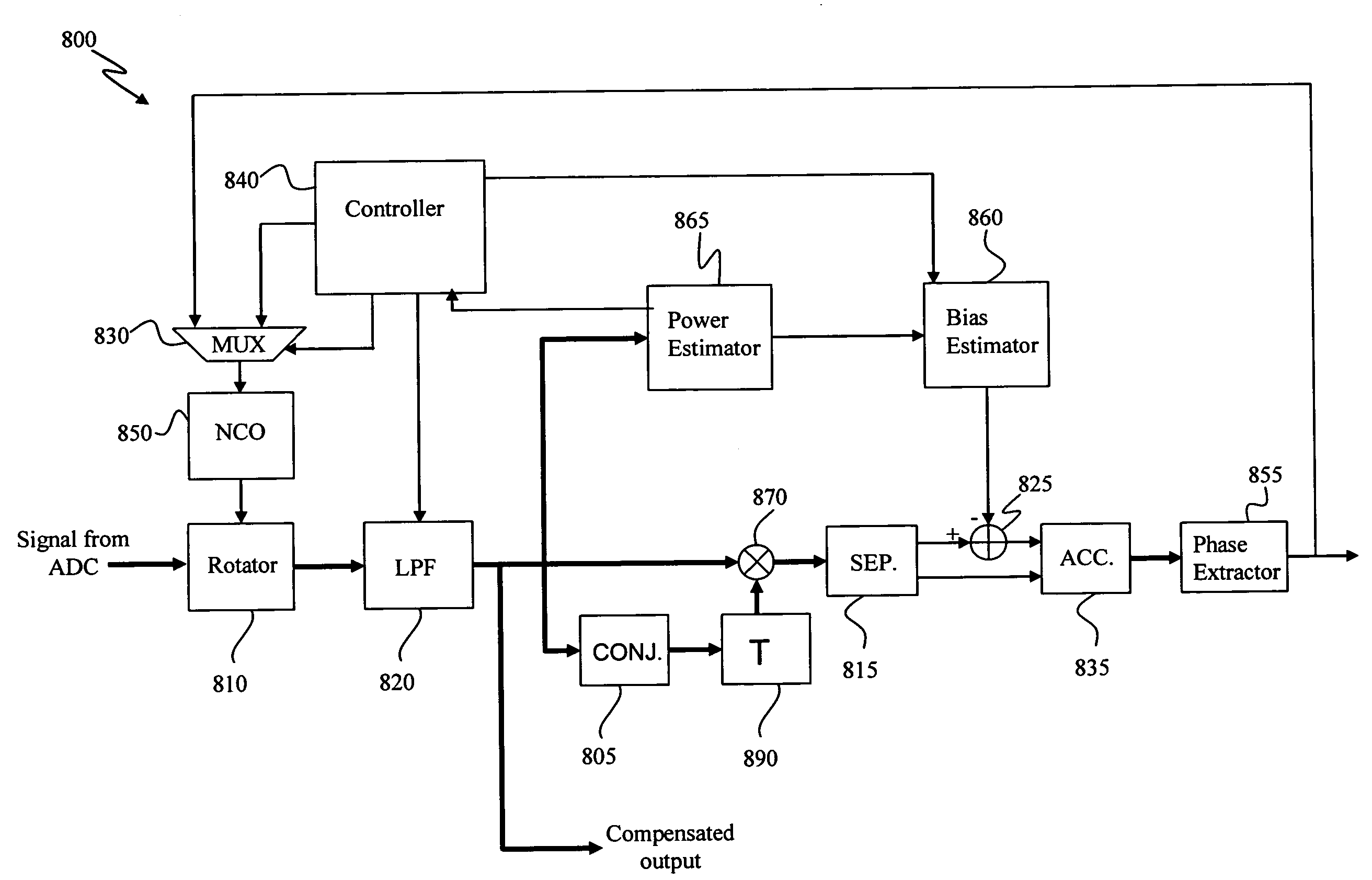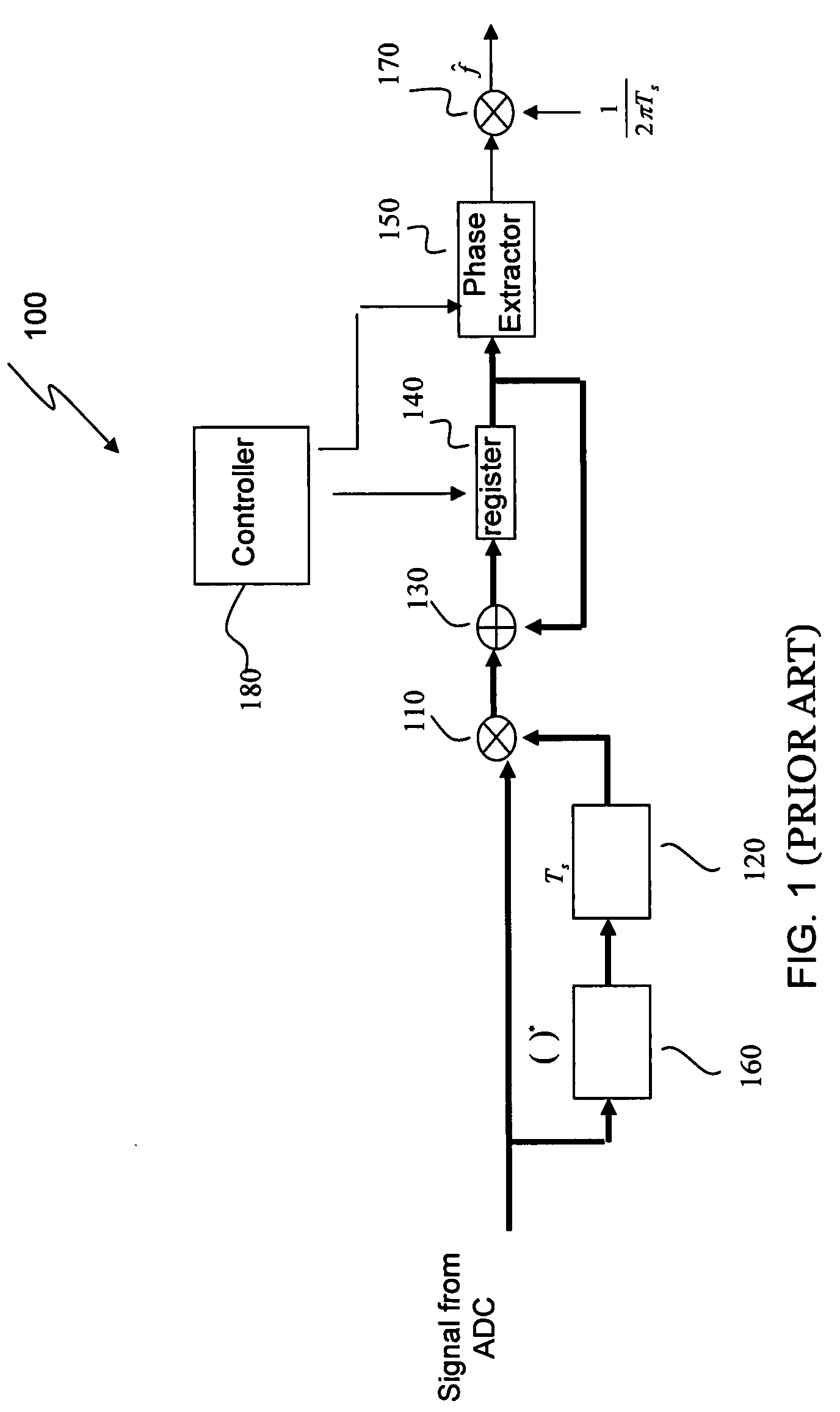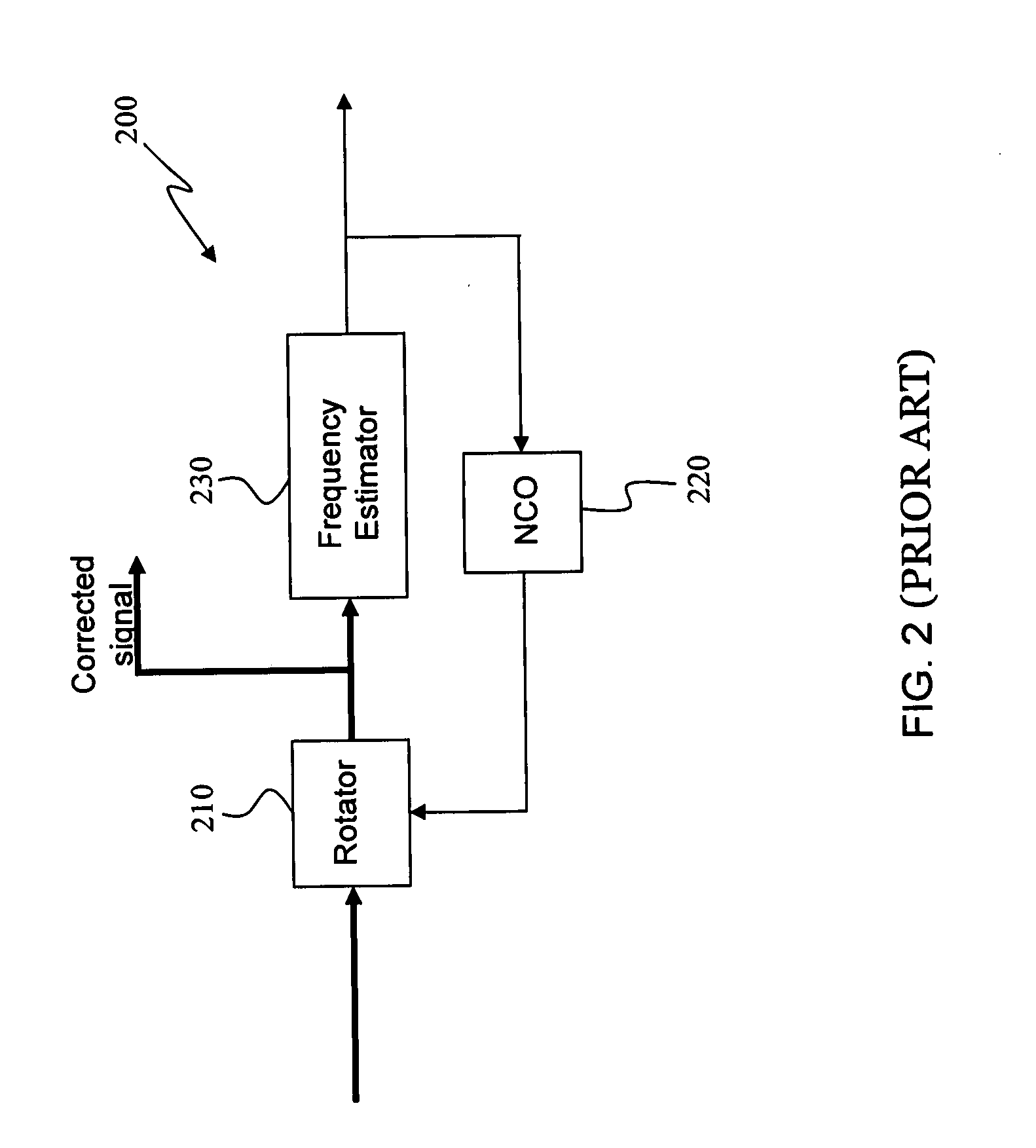Apparatus and method for frequency estimation in the presence of narrowband gaussian noise
a frequency estimation and narrowband gaussian noise technology, applied in the field of carrier frequency estimation circuits, can solve problems such as biased prior art estimators
- Summary
- Abstract
- Description
- Claims
- Application Information
AI Technical Summary
Problems solved by technology
Method used
Image
Examples
first embodiment
[0065]A frequency estimator according to the present invention is shown in FIG. 4, and indicated generally at 400. Input samples are received of the filtered received signals. The input samples include non-white noise as explained above. The input signal is received by an upper and a lower branch, of which the lower branch includes a delay unit 480 and a complex multiplier 490. Both branches lead to complex multiplier 470. Complex multiplier 470 multiplies the input sample with the output from delay unit 480. The output of delay unit 480 is thus a delayed version, generally by one sample period, of the complex conjugate of the input. The complex conjugate operation is carried out at complex conjugate calculation unit 490.
[0066]The output of multiplier 470 is separated into its constituent real and imaginary components by means of a real and complex component separator unit 420. The real output is provided to the upper output and the imaginary output is provided to the lower output. ...
second embodiment
[0079]Reference is now made to FIG. 8, which is a simplified block diagram showing the present invention. As illustrated schematically in FIG. 8, the sampled signal from the A to D Converter, (analogous to 507 in FIG. 5), is shifted in frequency by rotator 810. The output of rotator 810 may pass through an input lowpass filter 820, whose impulse response is known exactly. Thus the dependence on the analog outer filter (analogous to BPF 505 in FIG. 5) is removed, and there is no need to perform the complex autocorrelation function estimation as per the previous embodiment. According to the present embodiment, the analog outer filter may have a cutoff frequency larger than the cutoff frequency of internal digital low-pass filter 820. To save hardware resources, filter 820 and filter 510 in the power estimation unit 500, may share the same hardware, using techniques known to those with ordinary skill in the art.
[0080]In the present embodiment, it is also possible to use a single rotato...
PUM
 Login to View More
Login to View More Abstract
Description
Claims
Application Information
 Login to View More
Login to View More - R&D
- Intellectual Property
- Life Sciences
- Materials
- Tech Scout
- Unparalleled Data Quality
- Higher Quality Content
- 60% Fewer Hallucinations
Browse by: Latest US Patents, China's latest patents, Technical Efficacy Thesaurus, Application Domain, Technology Topic, Popular Technical Reports.
© 2025 PatSnap. All rights reserved.Legal|Privacy policy|Modern Slavery Act Transparency Statement|Sitemap|About US| Contact US: help@patsnap.com



